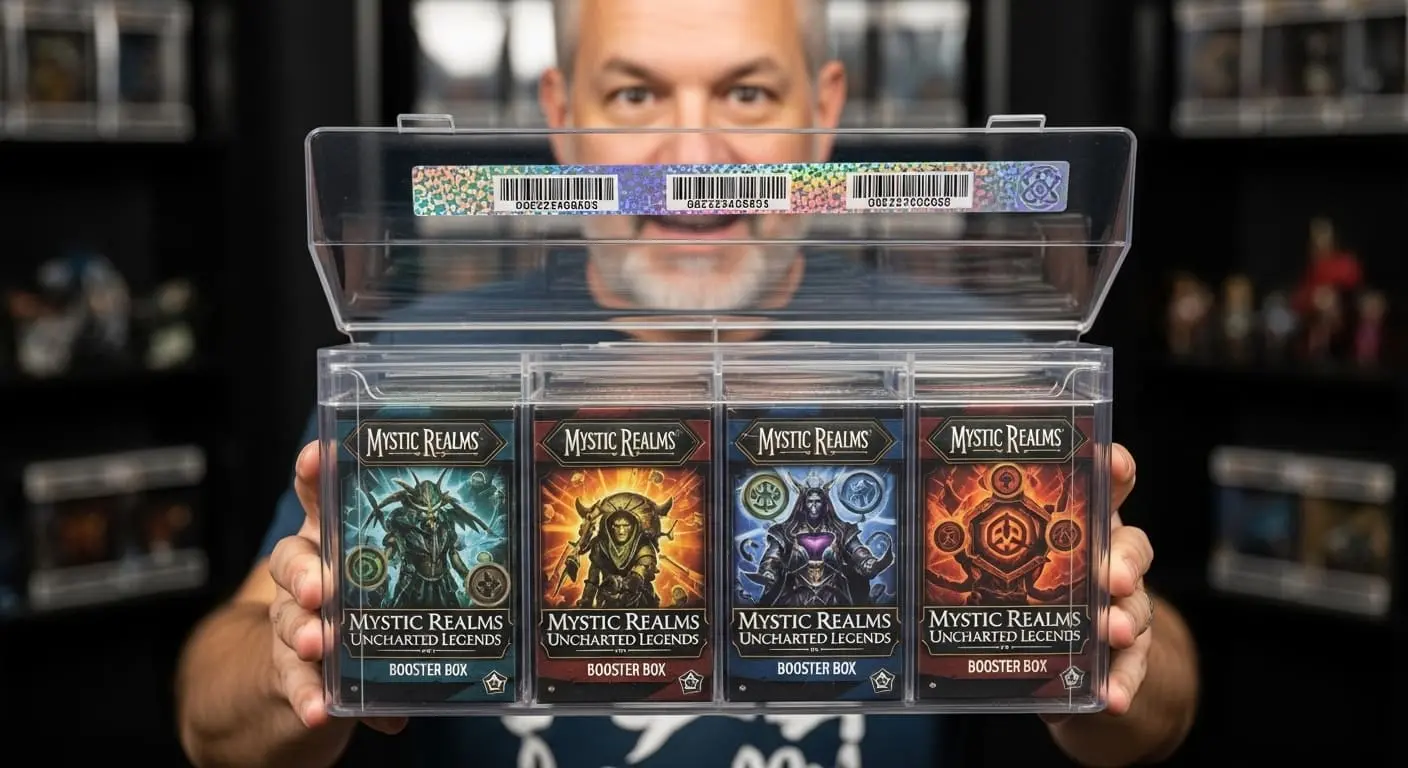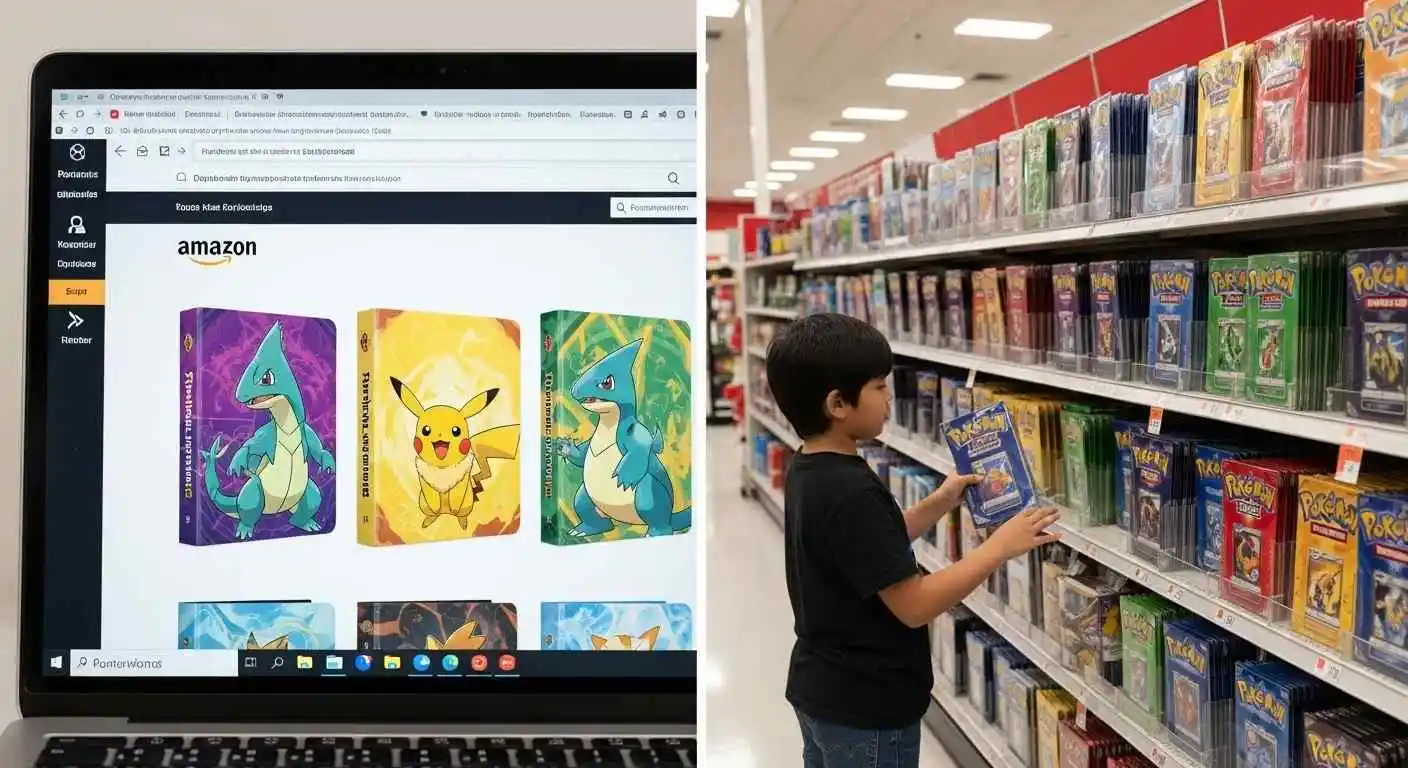If you’ve been around Pokemon cards for a while, you’ve probably heard the comparison: holo vs reverse holo. At first glance, they look alike—both shiny, both more exciting than a regular card—but the difference is easy to spot once you know where to look.
In simple terms, holo cards feature holographic artwork, while reverse holo cards have a holographic background with non-holo artwork. That single detail is what sets them apart, just like knowing the dimensions of a Pokémon card sets collectors apart from casual players.
Collectors have debated holo vs reverse holo for years. Some stick to holos for nostalgia and value, while others chase reverse holo sets to complete their binders. Either way, both play a big role in the Pokémon TCG hobby.

What is a Holo Card?
A holo card—short for holographic—was the first type of “special” Pokémon card. They’ve been around since the original Base Set in 1999. The main feature? The Pokémon artwork itself is holographic.
When you tilt the card under a light, you’ll see the shiny foil in the picture area, while the background of the card (name, HP, moves) stays normal.
Example: Base Set Charizard. Classic holo artwork that made kids lose their minds in the schoolyard.Other holo patterns include galaxy holo, cosmos holo, cracked ice holo, etc.
What is a Reverse Holo Card?
Reverse holo cards came later. They were first introduced in the Legendary Collection (2002) and became a standard feature in almost every set after. Instead of the artwork being shiny, the entire card background (text area, borders) is holographic—while the Pokémon artwork stays flat.
So basically, reverse holo flips the foil placement.
Example: A reverse holo Pikachu card where the background shimmers but the art of Pikachu doesn’t. Collectors either love or hate them.
Some see reverse holos as “less special” than true holos. Others chase complete reverse holo sets because they make the binder pages pop.
Holo vs Reverse Holo: Side-by-Side Differences
Here’s the simplest way to tell them apart:
| Feature | Holo Card | Reverse Holo Card |
| Shiny Area | Artwork only | Background & borders |
| First Appearance | Base Set (1999) | Legendary Collection (2002) |
| Collectability | Nostalgic, higher demand | Popular for binder collectors |
| Typical Rarity | Higher (1 holo per pack) | Common (1 reverse per pack) |
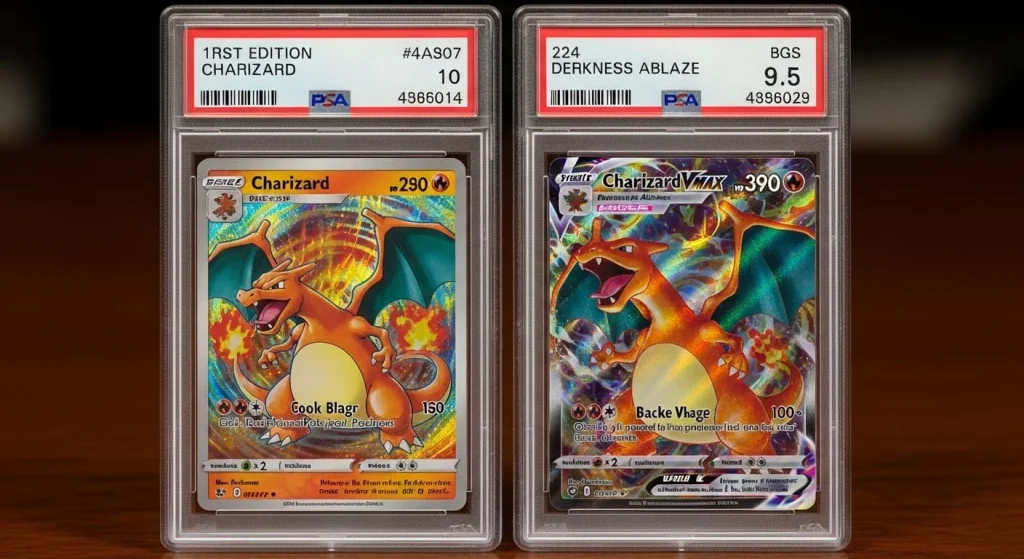
Which is Better: Holo or Reverse Holo?
This is where collectors start arguing.
- Collectors’ take: Vintage holos hold nostalgia and value. Reverse holos are fun but not the crown jewel.
- Players’ take: Many just like reverse holos because they look flashy in decks. Competitive players don’t usually care as long as the card is playable.
- Investors’ take: Holo cards (especially vintage) tend to appreciate more. Reverse holos sometimes spike if the Pokémon is popular, but they’re usually less valuable overall.
There isn’t a definitive answer. It depends on why you’re collecting.
Value and Rarity: Do Holo Cards Win?
Generally, yes—holos win out on value. But it’s not that simple.
- Vintage holos from Base, Jungle, Fossil, and Neo sets often fetch hundreds or thousands (PSA graded).
- Reverse holos from newer sets usually hover around a few dollars—unless it’s a fan favorite like Charizard, Umbreon, or Lugia.
- Some reverse holos in older sets like Legendary Collection or Skyridge are rare and pricey.
Collecting Holo vs Reverse Holo
A lot of people go after master sets, meaning one of every card in a set—including the reverse holo versions. That’s where reverse holos shine. You’ll find collectors who don’t stop until their binder has both the holo and reverse holo variants of each card.
On the flip side, some old-school collectors ignore reverse holos completely. They stick to the classics: holos and ultra rares.
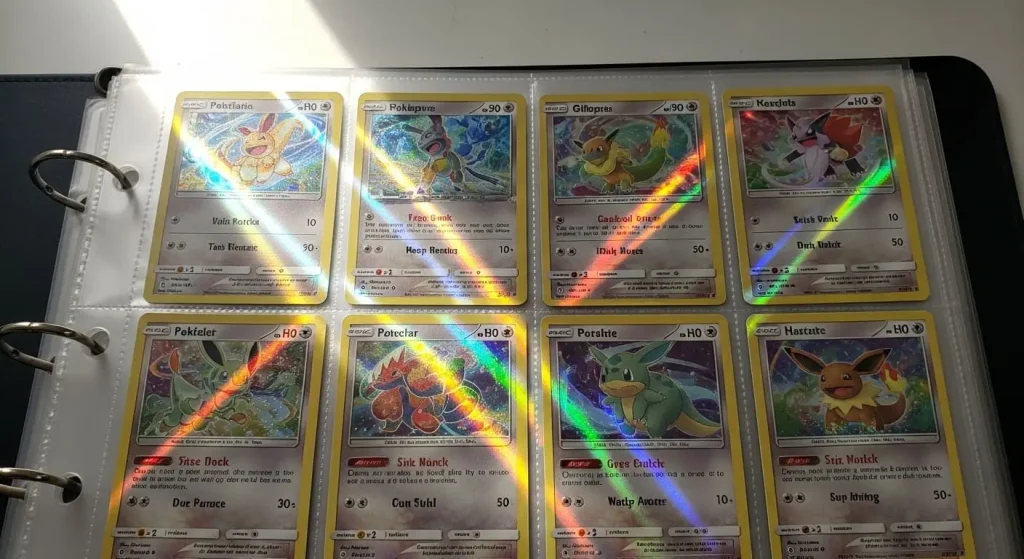
Spotting Fake vs Real Holo and Reverse Holo Cards
The market is full of fakes. Reverse holos are easier to fake because scammers just print a shiny overlay across the card.
How to check:
- Tilt the card. Real holofoil has depth and shimmer. Fake ones look flat.
- Feel the card texture. Reverse holos have a smoother foil finish across the surface.
- Look for print lines. Real holos often have them (yes, even straight from packs).
Grading, Condition, and Protection
One thing collectors know: Holo cards scratch easily. A single swipe across the artwork can ruin the grade. Reverse holos? They’re even worse sometimes because the entire background is foil, meaning every little print line shows.
If you plan to grade:
- Sleeve immediately (penny sleeves or perfect fit).
- Store in binders with side-load pockets.
- Use top loaders for expensive cards.
Professional grading companies like PSA, CGC Trading Cards, and Beckett Grading Services all evaluate holo and reverse holo cards differently, especially when it comes to surface flaws and scratches. Learning their grading standards before submitting can save both money and disappointment.
Investment Potential
Is it worth “investing” in holo or reverse holo cards? Depends on your strategy.
- Holo cards: Vintage ones almost always appreciate, especially fan favorites like Charizard, Blastoise, and Lugia.
- Reverse holos: Riskier. Some sets (Skyridge, Expedition) have reverse holos that became very valuable. But modern reverse holos? Not so much.
Collectors often say: buy what you like, not just what you think will rise in price.
Popular Sets & Examples
- Base Set holo Charizard vs reverse holo Charizard from newer sets.
- Expedition holo vs reverse holo—famous for the e-Reader borders.
- Delta Species reverse holos—quirky designs that now have a cult following.
- Skyridge reverse holos—binder collectors love these.
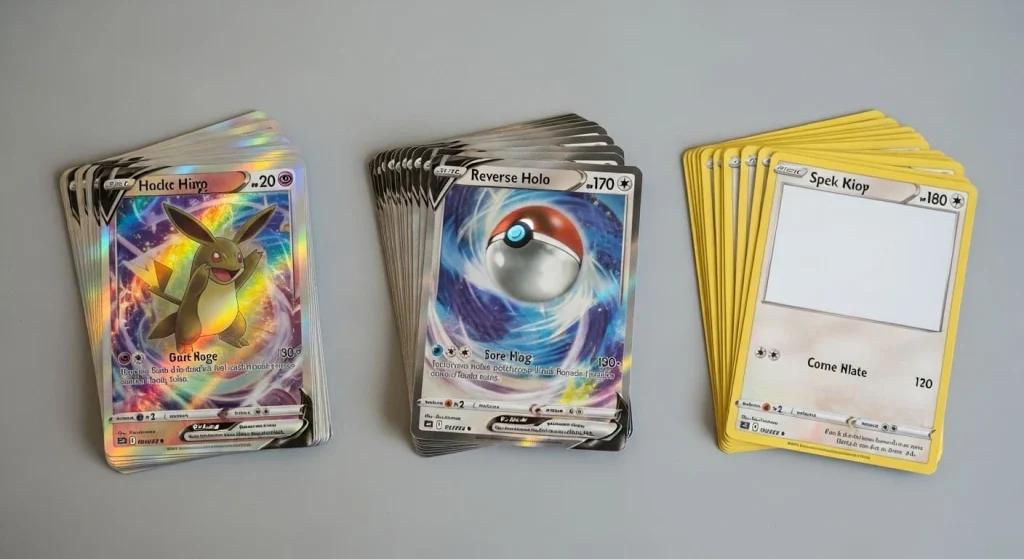
Variants Beyond Just Holo vs Reverse Holo
It gets more complicated. Pokémon TCG doesn’t stop at holo vs reverse holo:
- Cosmos holo: starry background.
- Galaxy holo: swirl effect.
- Cracked ice holo: sharp cracked glass pattern.
- Mirror holo: smooth shiny finish.
- Full art vs holo vs reverse holo: full art cards make both holos look simple in comparison.
Final Thoughts
At the end of the day, holo vs reverse holo isn’t a fight with a winner. Holos carry nostalgia and usually higher value. Reverse holos bring variety and binder satisfaction. Both scratch differently. Both shine differently. And both have their place in the hobby.
If you’re into value, chase holos. If you’re into building flashy binders, chase reverse holos. Most of us? We collect both anyway.
FAQs
Are reverse holos rarer than holos?
Not usually. Most packs guarantee a reverse holo, while holos are less common.
What does reverse holo mean on Pokémon cards?
It means the background and borders of the card are foil, while the Pokémon artwork is not.
Are reverse holos worth grading?
Yes, if it’s an older set or a fan-favorite Pokémon. Otherwise, they don’t hold much graded value.
Which is worth more: holo or reverse holo?
In most cases, holo cards. But older reverse holos from sets like Skyridge can outprice certain holos.
How can I tell if my card is holo or reverse holo?
Check where the foil is. Artwork shiny = holo. Background shiny = reverse holo.


